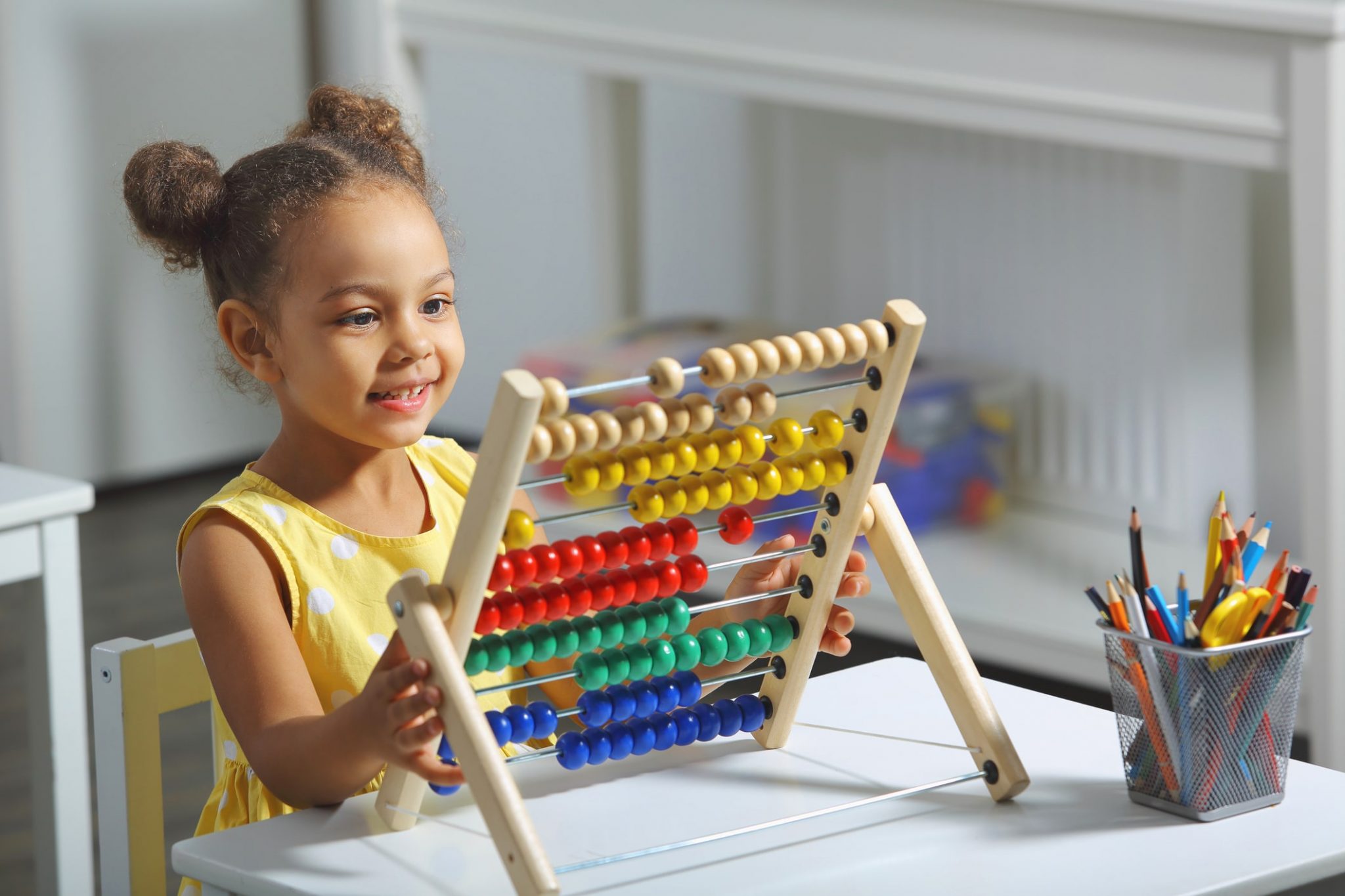How can you instill a passion for math in young children? When mathematical concepts are presented to them as exciting and engaging, students are more likely to enjoy the challenge of solving a problem rather than become frustrated. Pathway to Mathematical Understanding in Early Childhood covers the crucial steps that are necessary for helping young children learn how to have a lifelong appreciation and passion for math.
1. The Number Sense Road
Number Sense encompasses a child’s skills regarding counting, comparing numbers, estimating, quantifying, and recognizing number patterns. Practicing these skills at an early age helps children build upon their understanding of numbers. Once a child has developed a solid foundation for number sense, they will be more confident and receptive to learning advanced mathematics in the future.
Some examples of teaching number sense in early childhood include reading books that count numbers in order, recognizing a specific number, and comparing quantities such as greater or less than based on what they see. Nursery rhymes and songs are also a fantastic way to engage young children while helping them learn about math.
Ed Zaccaro has been teaching math and working with gifted students for over 30 years. During this time, he mentioned how he was shocked “to have some kids that would confine themselves to an intellectual box where everything’s easy.” He emphasizes the importance of helping students develop a passion for math in early childhood.

2. Promoting Passion
According to Zaccaro, Math can be exciting and useful when you teach relatable, real-life examples. Young children often respond well to concrete, tactile, and visual representations. When you engage younger students in hands-on activities, they have a better opportunity to create a connection with the subject matter.
Quantifying food or fruit is a good example to use with young students because it’s easy to visualize and appeals to everyone. Zaccaro explains how to accurately predict the number of jars that would be filled from making homemade applesauce. Students can give their guesses and theories as to what they think and why.
Zaccaro explains how “Passion for a subject often leads to excellence” and “Passion is very unlikely without understanding.” Therefore, when young children are taught how to understand math concepts, they will develop a natural passion for the subject. Consistent practice and repetition are key components of success!
3. Mathematical Comprehension
Mathematical thinking is much more than simply memorizing formulas and rules. You must first understand the basics of mathematics, or as Zaccaro refers to it, “the fun part.” He explains how “Rote math skills alongside mathematical thinking is like bricks and mortar,” because “one without the other doesn’t do much.” Independently, bricks and mortar cannot build a wall, but together, they are incredibly strong.
This same concept can be applied to how children learn math. Decoding doesn’t necessarily mean understanding. The purpose of practicing at an early age is for children to be able to apply what they have learned to real-world situations. When you teach students the fundamentals of rote counting in their early childhood combined with methods for mathematical thinking, you are setting them up for success later in life.
Interested in learning more about how you can instill a passion for math in your students? Explore the course demo on Pathway to Mathematical Understanding in Early Childhood today!







